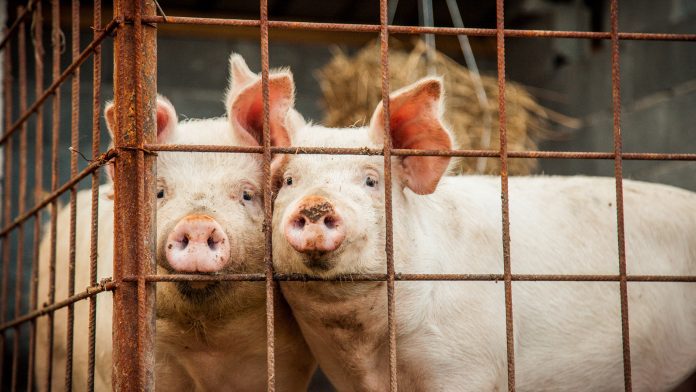
Research from the University of Cambridge has discovered an antibiotic-resistant MRSA strain that can be transmitted from infected pigs to humans.
The University of Cambridge study identified a highly antibiotic-resistant MRSA (methicillin resistant Staphylococcus aureus) strain called CC398, which they believe has become prevalent during the last 50 years due to widespread antibiotic use in pig farming. The team explained that CC398 has emerged as the dominant type of MRSA among European livestock and is one of the prominent causes of MRSA infections among humans.
The investigation revealed that CC398 has maintained its resistance to antibiotics within pigs and other livestock for decades and can effectively adapt to humans whilst maintaining antibiotic resistance, posing a significant threat to human life.
Dr Gemma Murray, a lead author of the study, previously in the University of Cambridge’s Department of Veterinary Medicine and now at the Wellcome Sanger Institute, commented: “Historically high levels of antibiotic use may have led to the evolution of this highly antibiotic resistant strain of MRSA on pig farms.
“We found that the antibiotic resistance in this livestock-associated MRSA is extremely stable – it has persisted over several decades, and also as the bacteria has spread across different livestock species.”
The study is published in the journal eLife.
The impacts of antibiotic use
MRSA was identified in humans for the first time in 1960, with the World Health Organization (WHO) stating that MRSA is one of the greatest threats to human health due to its resistance to antibiotics being much stronger than other bacterial infections.
The use of antibiotics in European livestock has declined significantly in recent years. However, the researchers explained that the policy changes that have mitigated antibiotic use on pig farms will have a limited impact on this antibiotic-resistant MRSA strain in pigs because it is highly stable.
Although CC398 is prevalent among a range of livestock species, it is most associated with pigs and has risen most notably in pig farms in Denmark, where MRSA-positive herds have increased from 5% in 2008 to 90% in 2018.
Dr Lucy Weinert in the University of Cambridge’s Department of Veterinary Medicine, the senior author of the paper, said: “Understanding the emergence and success of CC398 in European livestock – and its capacity to infect humans – is vitally important in managing the risk it poses to public health.”
Analysing CC398
The researchers suggested that the increased ability of CC398 to infect humans is associated with three mobile genetic elements in the MRSA genome, which are genetic materials that provide specific characteristics to MRSA, such as resistance to antibiotics and the ability to evade the human immune system.
For their study, the team reconstructed the evolution of two mobile genetic elements known as Tn916 and SCCmec that enable antibiotic resistance in MRSA and have maintained stability in pigs for decades. These genes are also carried over when CC398 is transmitted to humans.
However, a third mobile genetic element known as φSa3, which allows the antibiotic-resistant MRSA stain to evade the immune system, was discovered to have disappeared and reappeared frequently over time in humans and livestock. This means that CC398 can rapidly adapt to humans.
Weinert said: “Cases of livestock-associated MRSA in humans are still only a small fraction of all MRSA cases in human populations, but the fact that they’re increasing is a worrying sign.”
























